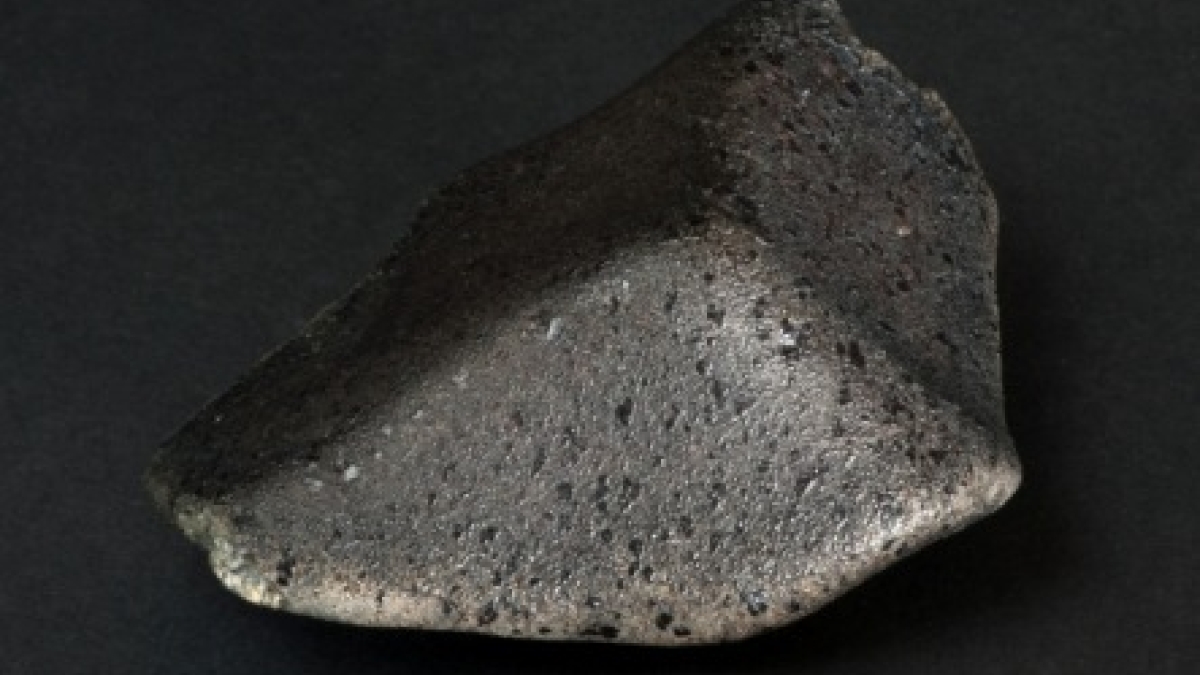ASU acquires exotic piece of Mars

ASU’s Center for Meteorite Studies has acquired a significant new sample for its collection: a rare Martian meteorite that fell in southern Morocco in July 2011. It is the first Martian fall in about 50 years.
Since the observed fall of the famed Ensisheim meteorite in 1492, there have been 1,200 recovered meteorite falls.
A “fall” is a meteorite that was witnessed by someone as it fell from the sky, whereas a “find” is a meteorite that was not observed to fall but was later found and collected. Only a handful of witnessed meteorite falls occur each year.
The chance of finding a meteorite is exceedingly small. The chance of witnessing a meteorite fall and finding it is even smaller – and the probability that the fall is a Martian meteorite is smaller yet.
“Martian falls are extremely rare,” said Laurence Garvie, collection manager for the center. “Less than 0.5% of falls are Martians. This new sample is probably one of our most prized pieces and, without a doubt, one of the most significant additions to our collection in several decades.”
Consisting of specimens from about 1,700 separate meteorite falls and finds, meteorites in the center’s collection represent samples collected from every part of the world. Most meteorites found on Earth come from the asteroid belt, but some from the Moon and Mars exist as well. These rare samples constitute a small but important part of the center’s collection.
While a few new Martian meteorite finds are reported each year, there have been only four recovered Martian falls prior to 2011.
Fragments of the planet Mars landed in the village of Chassigny, France, in 1815. Another fell on Shergotty, India, in 1865, and a third landed at Nakhla, Egypt, in 1911. The fourth fell in Zagami, Nigeria, in 1962.
The center’s newly acquired sample – named “Tissint” – is a significant meteorite, as it is only the fifth known Mars meteorite fall. The center holds small research and display pieces of each of the known Martian falls and also has six Martian finds in its collection. There are a total of 61 known distinct Mars meteorites.
To date, nearly 7 kilograms of stones have been collected from last summer’s Martian meteorite fall in Morocco. The 349 gram sample the center received is one of the largest from the fall, and it is by far the center’s largest Martian meteorite.
“As far as I am aware, this stone is currently the largest one from this fall in any research collection at a museum or university in the U.S.,” said Meenakshi “Mini” Wadhwa, director of the center and a professor in the School of Earth and Space Exploration in ASU’s College of Liberal Arts and Sciences.
“This is an important meteorite for our collection from the research and education standpoint,” Wadhwa said. “We plan to study it in our laboratories here at ASU to understand how and when it was formed on the planet Mars. We also intend to let students and the public enjoy it by highlighting it in a special display when the center moves to the new Interdisciplinary Science and Technology Building IV this spring, which will house the center’s offices, meteorite preparation labs, a state-of-the-art collection storage vault and expanded gallery space for public viewing.”
With the main stone to be used on display, another smaller 21-gram sample will be used for research studies.